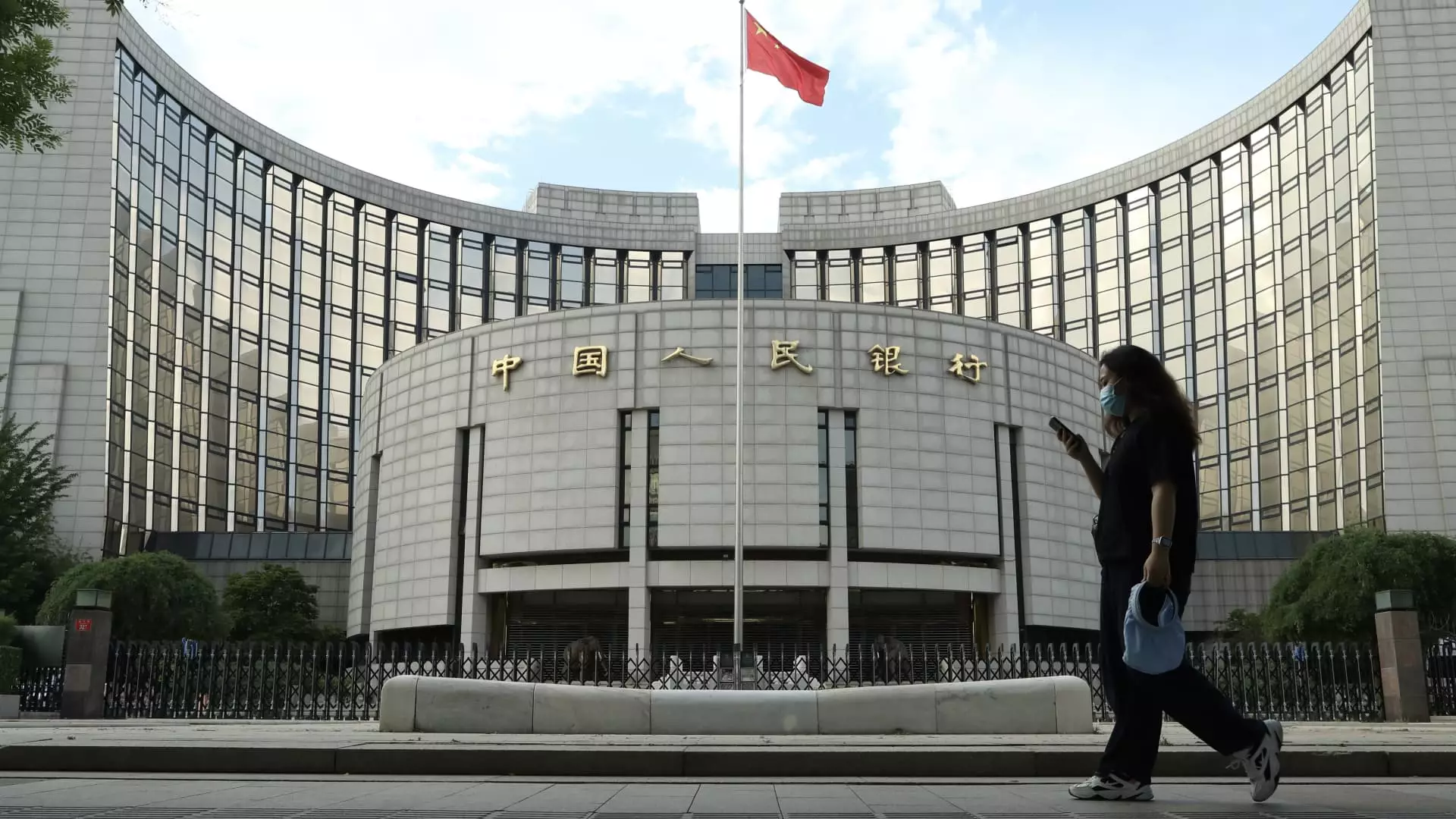On Monday, the People’s Bank of China (PBOC) announced a significant adjustment to its key lending rates, lowering the one-year loan prime rate (LPR) to 3.1% and the five-year rate to 3.6%. This 25 basis point reduction aligns with expectations voiced by central bank governor Pan Gongsheng, who indicated a potential decrease during a recent forum in Beijing. These adjustments aim to stimulate economic activity in a context marked by challenges, including a sluggish property sector and diminishing consumer confidence. However, this monetary easing raises questions about its effectiveness in addressing the core issues facing China’s economy.
The one-year and five-year LPRs play critical roles in the Chinese economy, influencing corporate loans and household credit, respectively. The one-year LPR primarily governs short-term financing for businesses and consumers, while the five-year LPR is essential for setting mortgage rates—affecting housing markets across the nation. By adjusting these rates, the PBOC aims to make borrowing more affordable, thereby encouraging investment and consumption. However, it is important to consider whether these measures will sufficiently echo through the broader economic landscape.
Key Insights from Economic Experts
Economic analysts, including Shane Oliver from AMP, interpret these rate cuts as a clear indication of monetary stimulus effects. Oliver emphasizes that while these reductions signal movement toward a more accommodating monetary policy, they may not be adequate to rejuvenate the economy on their own. “The cost of money is not the principal problem,” he argues, highlighting the ramifications of insufficient demand—a critique that underscores the limitations of relying solely on interest rate cuts as a tool for economic recovery.
Echoing this sentiment, Zhiwei Zhang, chief economist at Pinpoint Asset Management, points out that contrary to the intended effects of the recent cuts, real interest rates in China remain comparatively high. Zhang forecasts additional adjustments in the next year, suggesting further rate cuts will be necessary as international interest rates, particularly those dictated by the Federal Reserve, potentially decline. The expectation of more cuts reflects a broader acknowledgment that the current measures may not be sufficient to stimulate the desired economic growth.
This lending rate adjustment is part of a series of monetary measures, including previous cuts to the reserve requirement ratio (RRR), designed to enhance liquidity in an economy grappling with a continuum of challenges. Last month’s reduction in the RRR by 50 basis points was an early sign of the PBOC’s proactive approach to economic stimulus, catering to the pressing demands for cash amidst a declining property market and fluctuating consumer sentiment.
Despite the PBOC’s initiatives, recent data reveals a mixed picture of China’s economic recovery. While the country recorded a better-than-expected GDP growth of 4.6% year-on-year in the third quarter, indicators such as retail sales and industrial output for September also outperformed expectations. Yet, these figures alone cannot mask the underlying issues—an unrelenting property crisis and tepid consumer spending—which necessitate a multi-faceted approach that goes beyond monetary policy adjustments.
The Case for Fiscal Stimulus
In light of these circumstances, the discourse among economists increasingly leans towards advocating for more robust fiscal stimulus efforts. The intricacies of the current economic environment indicate that monetary policy may only provide limited relief unless complemented by substantial government-led fiscal initiatives aimed at bolstering demand directly. The challenge remains for policymakers to craft and implement strategies that effectively address the systemic weaknesses jeopardizing sustainable economic growth.
As China navigates these uncertain economic waters, the recent rate cuts signal a recognition of the need for a more supportive financial climate. However, the overall efficacy of these measures remains contingent upon broader structural reforms and enhanced fiscal policies to invigorate demand. The path ahead is fraught with challenges, and while the PBOC’s adjustments may serve as a preliminary response, they must be part of a comprehensive strategy to achieve meaningful economic revitalization.


Leave a Reply